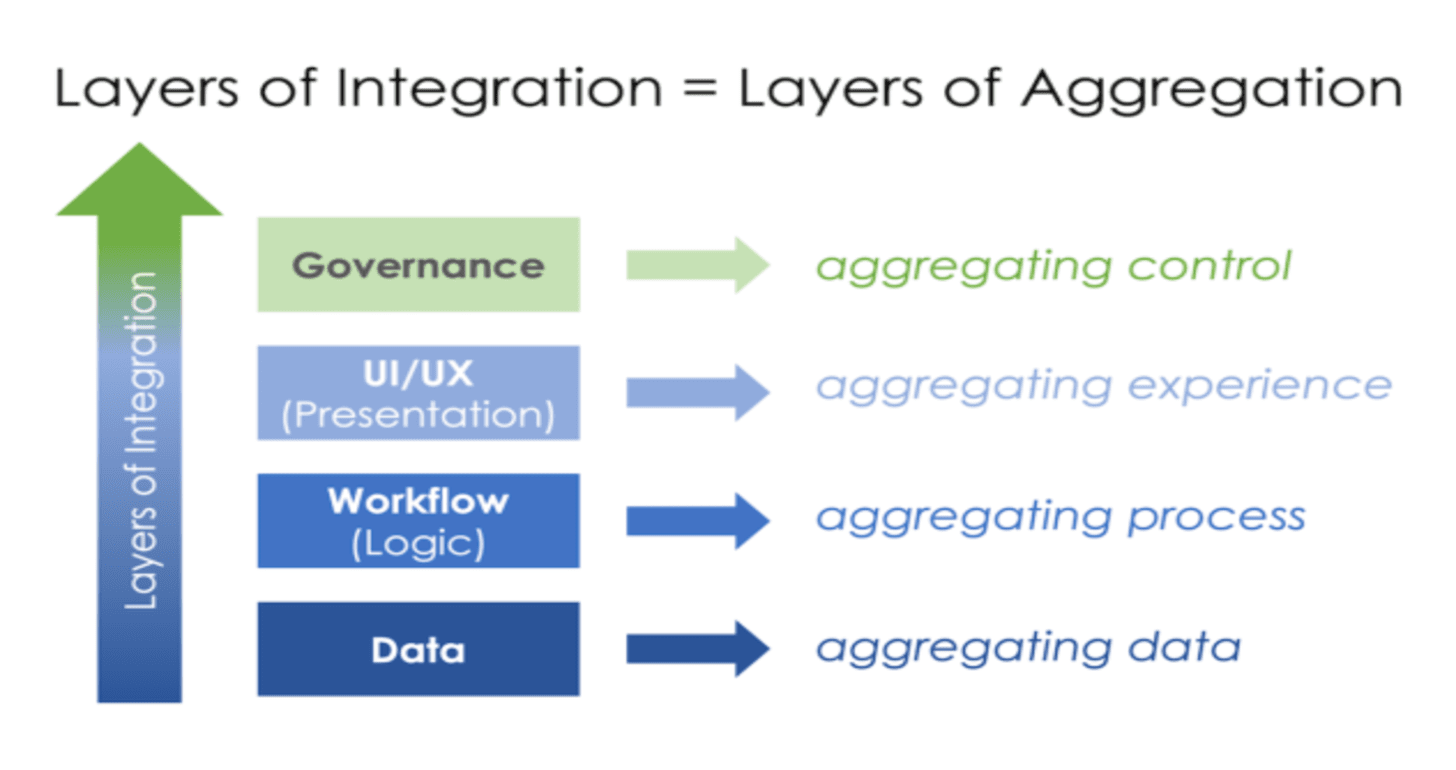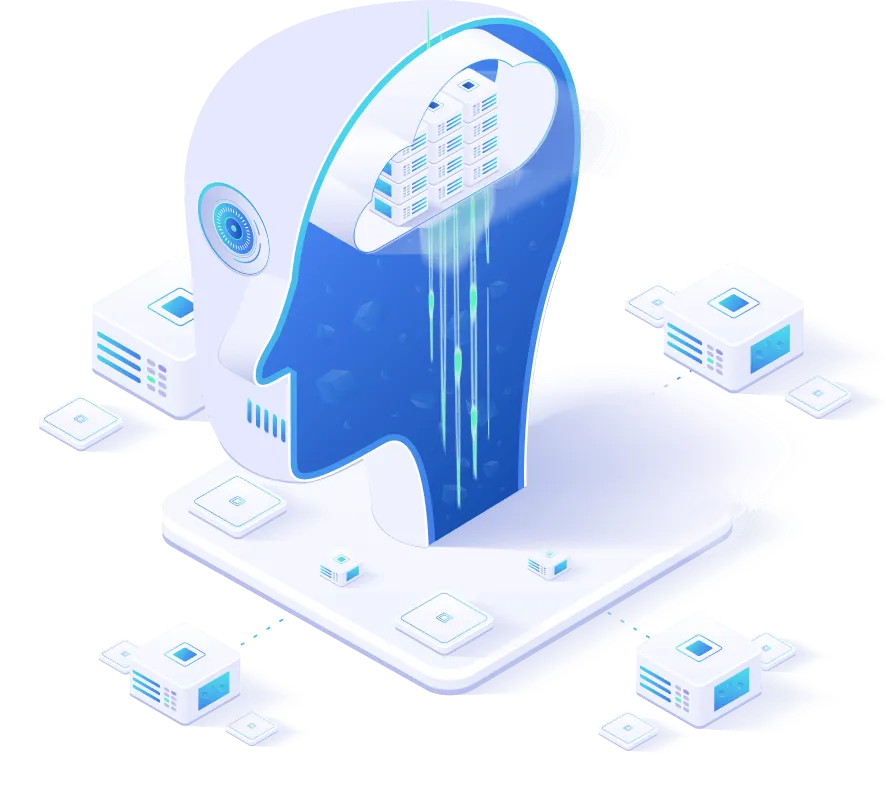I recently wrote about how Martech tools have arguably become virtual platforms. Even if you have a completely heterogeneous tool, you can have a suite of products that work across your entire tool stack to provide connectivity, even though each product is at a different integration layer:
- Data: everything eventually ends up in a “data lake” platform like Snowflake
- Workflow: tools like Workato and Zapier coordinate processes across apps
- UI/UX: tools like Slack provide a common user interface for interacting with many different applications
- Administration: SaaS management products like Torii and Blissly help manage all the SaaS platform applications in your stack

Now, platforms can be viewed as a means of aggregation. The four integration layers also correspond to the four aggregation layers in a platform, shown in the image at the beginning of this post:
- Data layer = Data aggregation
- Workflow Class = Process Aggregation
- UI/UX Layer = Experience Synthesis
- Administration Layer = Control Aggregation
Data aggregation is what we think of most often with platforms in Martech tools. But other aggregation layers are important too – even more so as we move from big data to big operations.
Total time
Time and attention are the scarcest resources in the digital age. Platforms that attract daily users will gain more and more power. They achieve this primarily by providing a UI/UX experience where their target customers can meet more and more of their needs without having to switch to another app or browser window. But there are many ways to save time and gain value, such as with automation.
Aggregate data, workflow, UI/UX, and governance all play a role in aggregate time. But the contributions of these elements are distinct enough, especially in a virtual platform, that different products can become competent services for that aggregate.

They just aggregate a layer. In fact, they just aggregate one aspect of a layer. But aggregate one aspect of a layer can create power in an otherwise heterogeneous tool.
Intra-tool synthesis theory (Martech)
It is impossible not to mention the synthesis theory defined by Ben Thompson of Stratechery when talking about synthesis between platforms.
A few years ago, Ben introduced aggregation theory as a model to explain the explosion of platforms like Facebook, Google, Airbnb, Netflix, etc. The three characteristics he identified are:
- Direct relationship with users.
- There is no marginal cost to serve the user
- On-demand multi-sided networking with ever-decreasing acquisition costs.
I believe that the synthesis theory is also playing out within the technology tools of companies.

Aggregators in this tool:
- Own the relationship with the user – such as being their user interface for communication.
- There is no marginal cost to serve the user.
- Benefit from network effects on demand.
It is also likely that many products – but not all – are aggregate tools within individual tools. It really depends on whether they can achieve the media effect on customers.
Original post: https://chiefmartec.com/2021/05/aggregation-theory-applied-martech-stacks-2/
Translator: Hoang Bach





